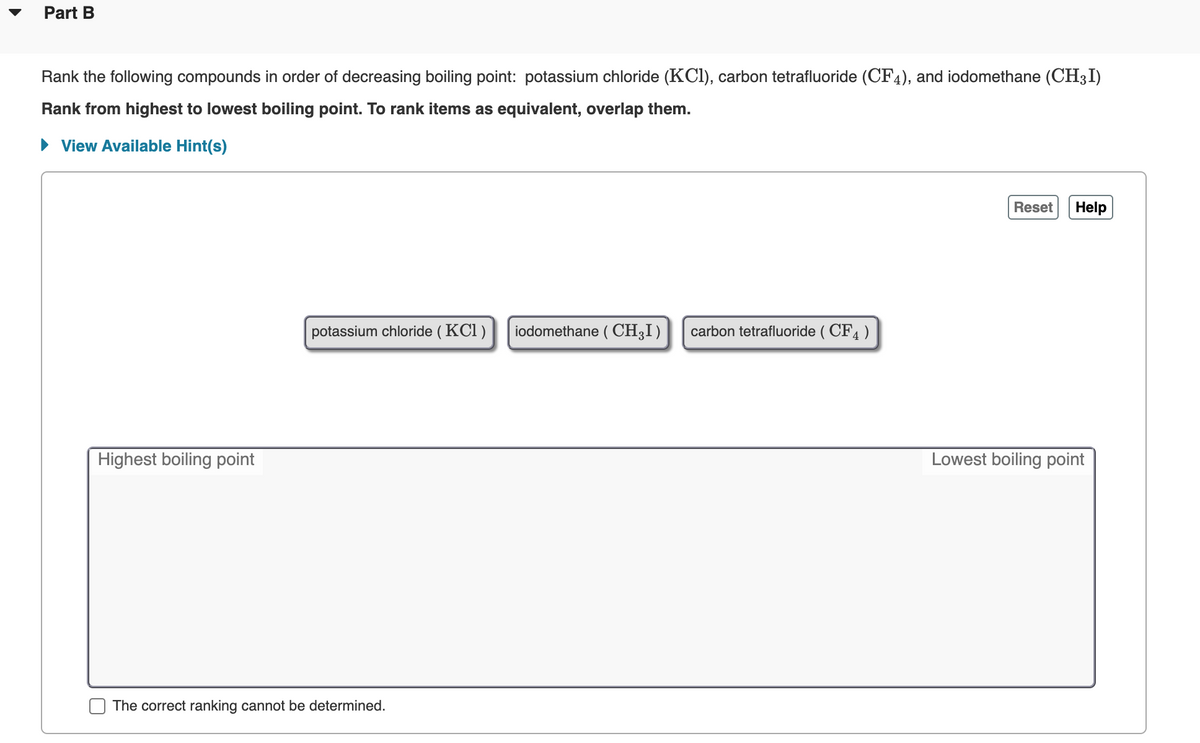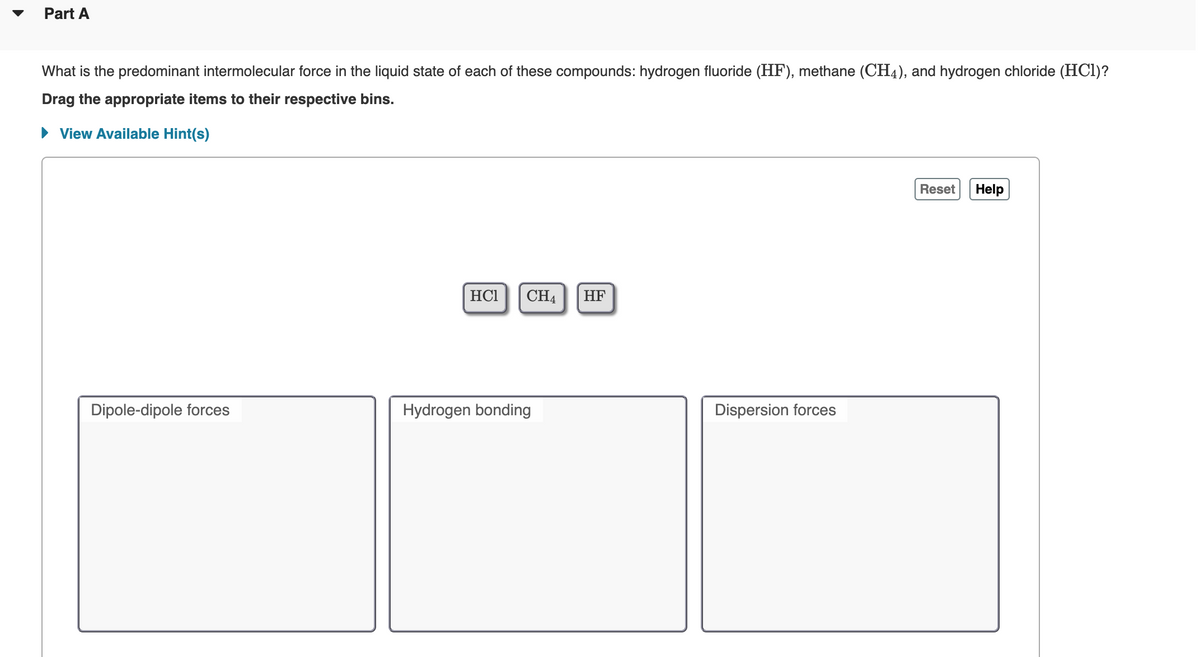Rank the following compounds in order of decreasing boiling point: potassium chloride (KCl), carbon tetrafluoride (CF4), and iodomethane (CH3I) Rank from highest to lowest boiling point. To rank items as equivalent, overlap them. • View Available Hint(s) Reset Help potassium chloride ( KCl ) iodomethane ( CH3I) carbon tetrafluoride ( CF, ) Highest boiling point Lowest boiling point O The correct ranking cannot be determined.
States of Matter
The substance that constitutes everything in the universe is known as matter. Matter comprises atoms which in turn are composed of electrons, protons, and neutrons. Different atoms combine together to give rise to molecules that act as a foundation for all kinds of substances. There are five states of matter based on their energies of attraction, namely solid, liquid, gases, plasma, and BEC (Bose-Einstein condensates).
Chemical Reactions and Equations
When a chemical species is transformed into another chemical species it is said to have undergone a chemical reaction. It consists of breaking existing bonds and forming new bonds by changing the position of electrons. These reactions are best explained using a chemical equation.
Please answer question 2 part A and B


Trending now
This is a popular solution!
Step by step
Solved in 2 steps









